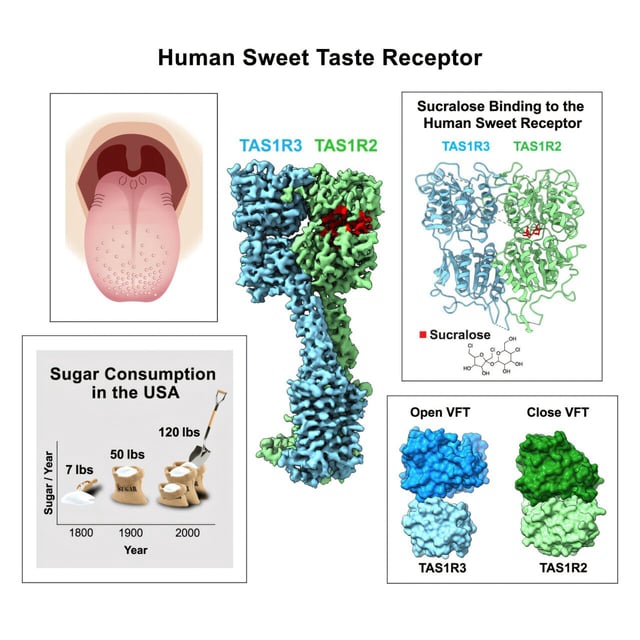Overview
- For the first time, the 3D molecular structure of the human sweet taste receptor, TAS1R2–TAS1R3, has been mapped using cryo-electron microscopy.
- The study demonstrates how artificial sweeteners like sucralose and aspartame bind more tightly to the receptor than natural sugars, offering insights into sweetness perception.
- The TAS1R2 subunit contains a flexible binding pocket that accommodates various sweeteners, while TAS1R3 provides structural support for the receptor complex.
- More than 150 protein preparations over three years were required to stabilize the receptor for high-resolution imaging, achieving a resolution of 2.8 angstroms.
- Researchers suggest the findings could inform the design of new compounds to regulate sugar cravings and support research into metabolic disorders like diabetes.



